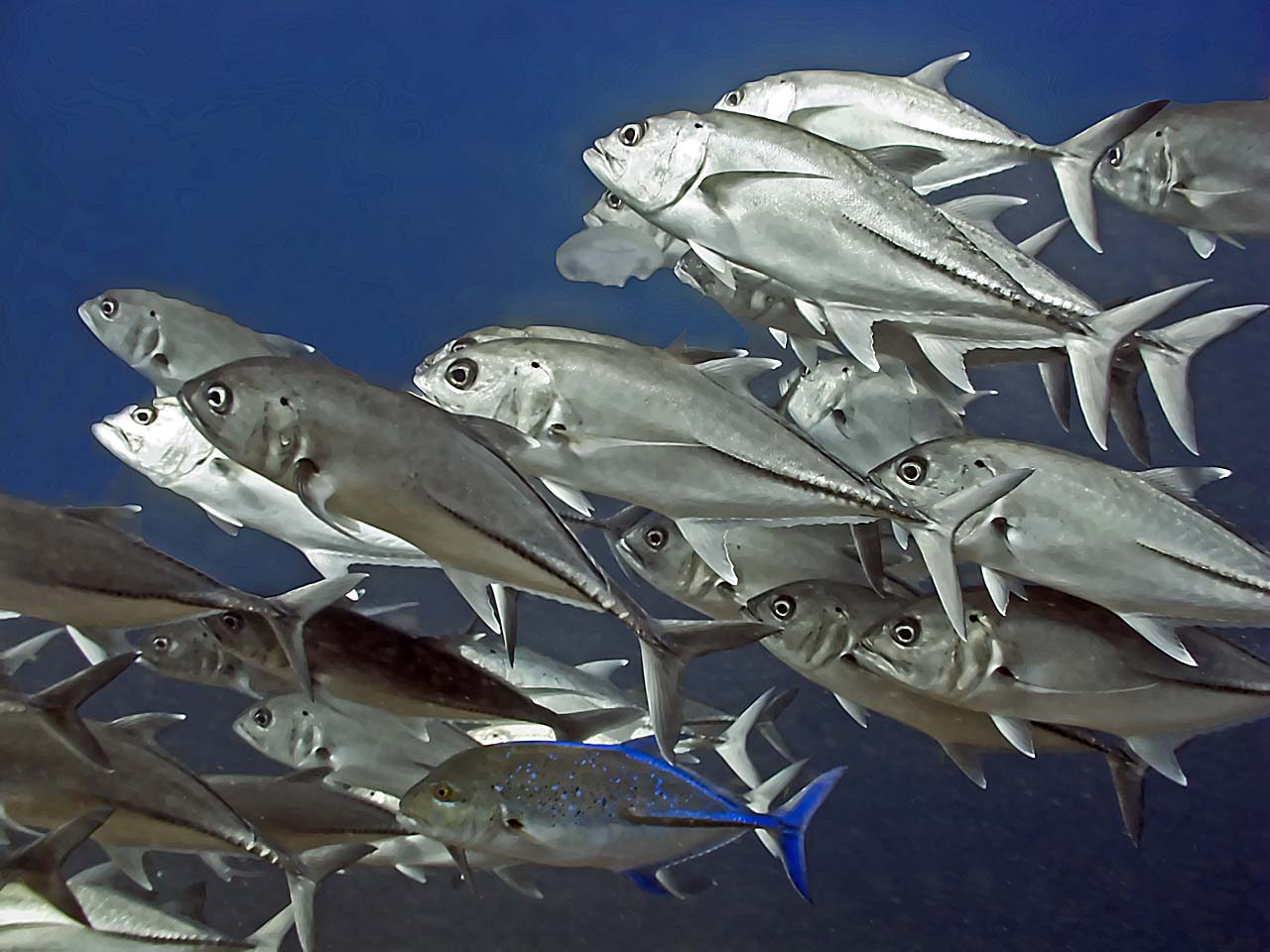Rich saw these right at the rocks where the waves were crashing. It was a big school of hundreds.
I tried to get close to see them but was pounded by the waves. By the time I got there, they were gone.
From Wiki" It is predominantly an inshore fish, inhabiting reefs down to depths of around 100 m in both coastal zones and offshore islands, often venturing into estuaries and sandy bays as juveniles. The bigeye trevally is commonly found in large slow moving schools during the day, becoming active at night when it feeds, taking a variety of fish, crustaceans, cephalopods and other invertebrates. The fish is known to move from a more crustacean dominated diet as a juvenile to a nearly completely fish dominated diet as an adult.
The bigeye trevally is of moderate importance to fisheries throughout its range, and being of high importance to some artisanal fisheries. It is taken by gill net, hook and line and other artisanal fishing methods. It is rated as a fair to good table fish.
The bigeye trevally is a schooling species, known to form aggregations consisting of more than 1500 fish. The species is often seen in these large schools either stationary or slowly moving around the reef complexes they inhabit during the day. At night, these schools dissolve, and the species become active, taking most of its prey during the nocturnal period.This contrasts to most jacks, which are generally diurnal hunters, although the species has been documented hunting in shallower waters during the day, especially as juveniles.


No comments:
Post a Comment